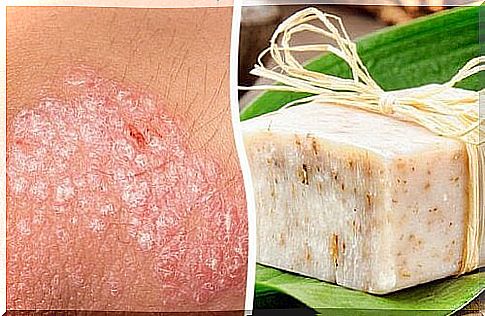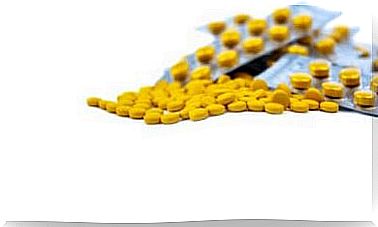A Natural Soap Against Eczema
Thanks to the properties of essential oils, you will obtain a moisturizing soap with antibacterial properties, which will help you to de-inflame the affected areas of your body, and which will promote regeneration of your skin.

In this article, we are going to share with you a recipe for making a natural soap that you can use all over your body, and which will be particularly beneficial if you suffer from eczema.
How do you know if you have eczema?
Eczema refers to a skin condition that causes redness, inflammation, and sometimes itching. It is similar in appearance to a rash, and although it can appear at any age, it mostly affects babies and children.
The soap that we are going to develop can be used on all types of eczema and atopic dermatitis, as well as on psoriasis for example.
You should know that skin problems are becoming more and more frequent in our society.
They are caused by environmental factors, but also by too much exposure to certain chemicals, or even by eating foods that are not well digested by the body. Genetic factors can also influence the onset of this condition.
Eczema problems are usually chronic, and very difficult to control or eliminate.
For this reason, it is fundamental to treat them in a holistic way, that is to say from different perspectives:
- Use natural products and fabrics.
- Be aware of your possible food intolerances.
- Don’t underestimate your allergic reactions to certain germs.
- Take into account your nervousness and emotional states.
What products are we going to use?
- Neem: this oil is characterized by its regenerating, restructuring and moisturizing benefits, which are very useful for treating any skin problem.
- Calendula oil: Calendula oil is great for people who suffer from psoriasis and eczema, as it helps reduce inflammation in the skin and helps prevent dryness.
- Tea tree oil: Tea tree essential oil is very powerful in treating skin problems caused by fungi or bacteria. It also helps regenerate the skin.
Ingredients
- 210 ml olive oil
- 30 g of caustic soda
- 65 ml of distilled water
- 30 drops of neem oil
- 30 drops of calendula oil
- 15 drops of tea tree essential oil
The necessary utensils
- The mold you like the most. But do not use an aluminum mold. You can always use the base of a water bottle or a carton of milk.
- Protective goggles, for handling caustic soda.
- A blender.
- A saucepan
- A glass jar
- A wooden spoon for stirring.
Soap making
- Very carefully, and using eye protection, put a glass jar in your sink, and pour in the caustic soda. Then also pour in the distilled water.
- Do it in this order to avoid splashing. Since this mixture produces vapors, let it sit until it cools.
- If possible, open a window while doing this.
- Pour the oil into a saucepan, and heat over low heat.
- When it is a little hot, around 40 ºC, remove it from the heat, then mix with the caustic soda, being very careful.
- Blend everything, trying to avoid splashing, until the mixture takes on a good, gel-like consistency.
- At this precise moment, without waiting for the mixture to cool, add the essential oils, then mix well.
- Pour this mixture into the mold, then cover it with a towel to maintain the heat of the mixture, so that the saponification takes place under good conditions.
- Let the mixture sit until it cools, between 12 and 24 hours.
- Once it is cold, you can unmold the soap.
- Store it in a cool, dry place to harden for a month and a half, or even two months.
If you are satisfied with the result, you can make more soap next time, by proportionately multiplying the amount of ingredients in the recipe, and using different types of molds.
When the soap is cold, you can cut it into pieces with a knife, keeping them slightly separated during the maturing process, so that they dry well.
Precautions for use
- We recommend that you handle caustic soda with care, being careful that there are no children or animals near you.
- Always use protective goggles, even a mask and gloves. Indeed, caustic soda is a very corrosive substance.
- If you get it on the skin, immediately apply a little vinegar.









